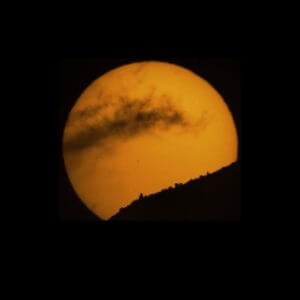
Where will you be for the Mercury Transit?
When: Monday, May 9th 2016
Where: The above map outlines the areas of the world where the Transit will be visible. (courtesy of Fred Espenak)
For more information about the Transit of Mercury from Fred Espenak (Mr. Eclipse) visit: http://www.eclipsewise.com/oh/tm2016.html
This event will be the Transit of Mercury (Our first planet from the Sun) as it crosses the face of the Sun between the Earth and the Sun. It will be seen as a very small speck even at moderate magnification.
Fred has some great books on sale that also outline everything you need to know about the upcoming USA Total Solar Eclipse. Visit Eclipse Products to browse for educational information and eclipse products.
What will you need?
In order to establish what you will need I’d like to provide a quick overview of some of the relative sizes and distances of the objects in question:
(Note: the distances provided are approximately the distance at their closest points)
Distance of Earth to Sun: 92.96M Miles
Distance of Earth to Mercury: 47.85M Miles
Distance of Earth to Venus: 25M Miles
Diameter of the Sun: 864,949 Miles
Diameter of Mercury: 3,032 Miles
Diameter of Venus: 7,520.8 Miles
Diameter of our Moon: 2,159 Miles
Diameter of Earth: 7,917 Miles
For those that were lucky enough to see the Transit of Venus it is worth noting that the relative size of the Transit of Mercury will be approximately 1/5 of the size of the Venus event @ 12 arcsecs.
The Transit of Mercury is NOT visible to the naked eye and cannot be detected through standard solar viewing glasses.
- It is recommended that in order to fully appreciate the Transit of Mercury and be able to determine the various contact points that a 50x or higher magnification be used.
- It may be possible to detect Mercury with as low as 8X power through a Lunt SUNocular. However, you would need excellent seeing conditions, excellent eyesight, and excellent stability.
- It is probably not possible to detect the planet through a pair of SUNocular mini.
- A tracking mount will not be required for typical observation.
- Lunt recommend the use of 25X magnification or higher utilizing either white light (wedges and film), Cak, and or, H-alpha equipment. Given the upcoming USA Total Solar Eclipse of 2017 we would recommend that you invest in a product that will work for both events.
- If you have any questions about products and their use for events such as transits and Eclipses please contact us at Lunt Sales.